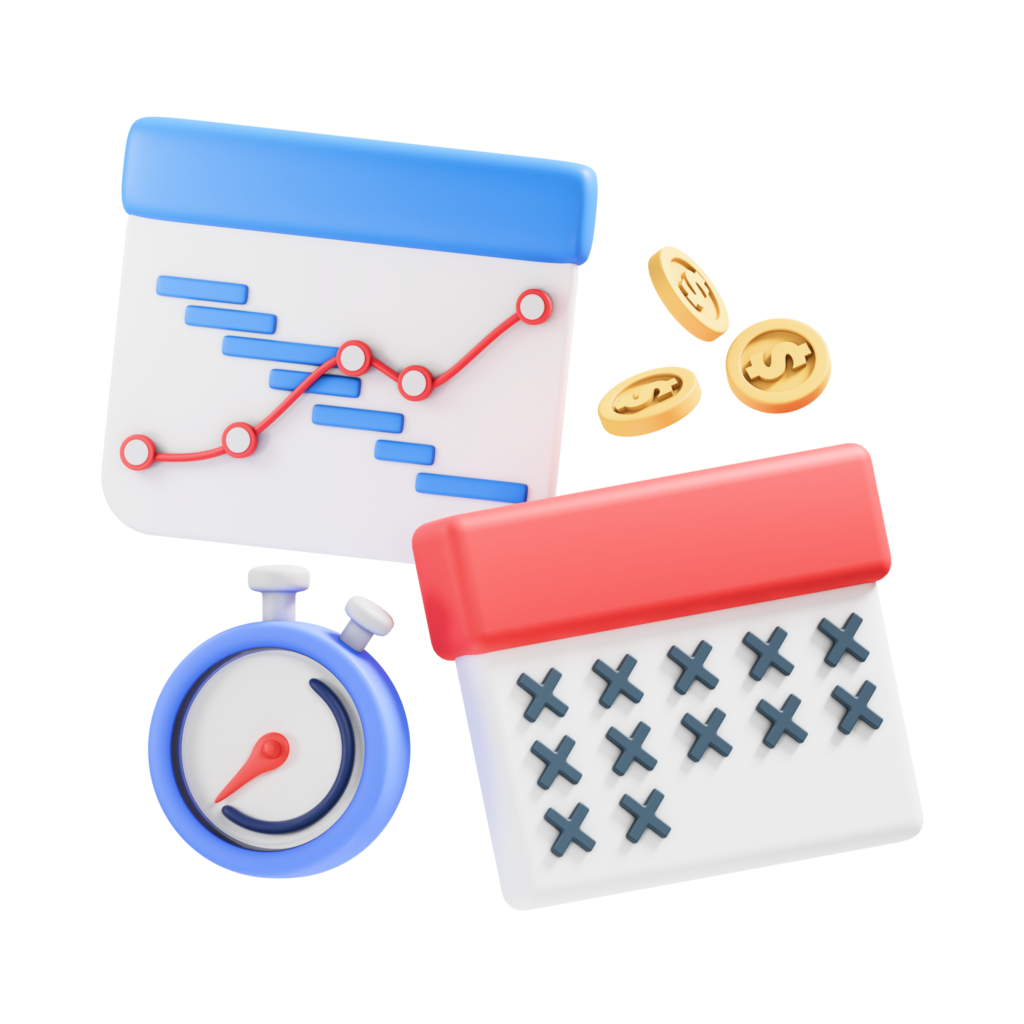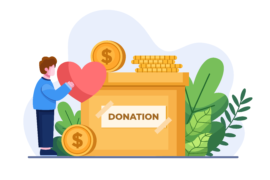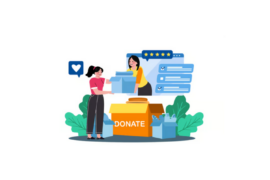In the ever-changing landscape of the nonprofit sector, organizations face the dynamic challenge of addressing immediate needs while cultivating enduring impact over time. At the heart of this endeavor lies forging deep and lasting relationships with donors, supporters, and stakeholders through continual engagement. Yet in today’s world where donor connections grow ever more intricate, the requirement for nimble and impactful donor administration platforms has never been more critical.
Donor management systems stand as the structural backbone of nonprofit operations, outfitting the tools and infrastructure vital to effectively tracking, involving, and nurturing donors throughout their journey with an organization. From initial contact to ongoing collaborative efforts, these systems play a pivotal role in facilitating meaningful bonds, fostering dedicated commitment, and ultimately driving long-lasting success.
Indeed, the concept of sustained success lies at the core of every nonprofit entity’s mission. It extends beyond near-term goals and immediate outcomes, encompassing the ability to persistently fulfill organizational objectives, serve communities, and generate change that endures. Whether advancing a cause, aiding marginalized groups, or addressing pressing social issues, the capacity for impact that transcends time is the true measure of a nonprofit’s impact.
Donor management systems emerge as indispensable tools for nonprofits striving to achieve success that stands the test of time. By providing holistic solutions for donor cultivation, involvement, and retention, these systems empower organizations to construct robust and resilient fundraising strategies built to last. From streamlining administrative tasks to leveraging data-driven insights, the capabilities of modern donor management systems are instrumental in driving proficiency, impact, and sustainability across the nonprofit sector.
Understanding Long-term Success in Nonprofits
In the nonprofit sphere, enduring accomplishment surmounts short-term survival or fleeting victories alone. Rather, it epitomizes an organization’s continual aptitude to fulfill its purpose, effect positive change, and make an everlasting impact on the communities served. Fundamentally, sustainable achievement for nonprofits incorporates several pivotal factors:
Long-Term Achievement:
Long-term achievement for nonprofits involves attaining outcomes aligned with their vision and mission over time. It demands reliably providing programs and services addressing societal needs, advancing equity and social justice, and boosting individual and community well-being. Moreover, long-term achievement transcends immediate results, encompassing resilience against adversity, adaptableness to shifts, and growth potential.
Obstacles to Sustaining Success:
Nonprofits confront myriad hurdles sustaining achievement in the long haul. Restricted finances, volatile donor support, intensified funding competition, evolving needs, regulatory fluctuations, and demographic variations compound challenges. External pressures like recessions, disasters, and geopolitical instability can further problematize stability and consistency, hampering maintenance.
Role of Loyal Donors, Relationship Cultivation, Strategic Planning:
Core to accomplishing enduring achievement is nurturing strong, lasting ties with donors, supporters, volunteers, and other stakeholders. Retaining existing donors and inspiring lifelong commitment remains paramount for sustained funding. Prioritizing stewardship, involvement, and customized communication fosters trust, connections, and dedication.
Moreover, effective relationship-building surpasses individual donors, encompassing collaborative efforts and strategic alliances with corporations, foundations, government, and peers. Joint initiatives and partnerships leverage resources, access new streams, and magnify impact through collective work.
Strategic planning plays a critical role guiding nonprofits towards long-term achievement by aligning goals, priorities, and assets. Through planning, nonprofits can assess strengths and weaknesses, identify openings and threats, set clear objectives, and craft applicable strategies achieving their purpose in the long run. Nurturing innovation, flexibility, and continual progress empowers navigating hurdles and grasping chances while staying pertinent.
The Evolution of Donor Management Systems
Donor management systems have truly transformed over the decades, transitioning from basic paper-based methods to sophisticated digital tools that empower nonprofits to streamline workflows, bolster donor connections, and maximize impact. This evolution has been driven by an understanding of the limitations inherent in traditional models and an urgent need for more efficient and successful systems to meet the evolving demands of charitable work.
Tracing the Transformations:
In early nonprofit fundraising days, donor management relied heavily on handwritten records, file cabinets filled with paper, and basic spreadsheets. While these approaches served their purpose to some extent, they were painstaking, consumed significant time, and were prone to mistakes. What’s more, they lacked the flexibility, analytical abilities, and scalability crucial to support the intricate fundraising efforts of modern nonprofits.
As technology advanced, nonprofit groups began adopting rudimentary donor management software aimed at automating basic tasks like tracking givers, handling gifts, and managing communication. These initial systems provided a substantial improvement over manual methods, allowing for greater efficiency and organization. However, they regularly failed to integrate fully, came with interfaces not friendly to use, and offered limited functionality, constraining their effectiveness in meeting nonprofits’ diverse needs.
In recent years, donor management systems have undergone a paradigm shift with the emergence of cloud-hosted platforms and integrated CRM solutions custom-tailored for charity work. These modern tools leverage cutting-edge technologies such as artificial intelligence, automation, and data analysis to equip nonprofits with comprehensive instruments for cultivating, engaging, and stewarding donors.
Shortcomings and the Need for Sophisticated Systems:
Traditional donor management approaches were fraught with inherent limitations that hindered nonprofits from achieving their fundraising goals and sustaining relationships over the long-term. Manual methods were prone to errors, redundant efforts, and inefficiencies, leading to lost opportunities and diminished satisfaction among donors. Additionally, the lack of centralized data storage and accessibility made it challenging for nonprofits to maintain accurate records of donors, track interactions, and perform effective analysis of donor behavior.
As nonprofit fundraising became increasingly competitive and donor expectations evolved, it became apparent that traditional donor management methods were no longer sufficient to meet the demands of the digital era. Nonprofits required more sophisticated systems that could adapt to their changing needs, scale with growth, and provide actionable insights to guide strategic decision-making.
Technological Advancements Revolutionizing Donor Management Practices:
Technological progress has revolutionized donor management practices, enabling nonprofits to harness the power of data-driven insights, automation, and personalized communication to enhance engagement with donors and maximize fundraising effectiveness. Modern donor management systems offer a comprehensive suite of features and functions, including donor database administration, online fundraising tools, event management, email marketing, donor segmentation, and reporting and analytics.
By leveraging these advanced capabilities, nonprofits can streamline administrative tasks, automate routine processes, and focus their resources on strategic initiatives that drive mission impact. Moreover, modern donor management systems facilitate seamless integration with other fundraising tools and platforms, allowing nonprofits to create cohesive and personalized experiences for donors across multiple channels.

Key Features of the Best Donor Management Systems
Selecting the optimum benefactor administration arrangement is pivotal for corporations in quest of optimizing their tasks, enhancing benefactor relationships, and driving sustainable amplification. The superior benefactor administration schemes tender an all-encompassing set of capabilities and features planned to streamline managerial chores, facilitate benefactor involvement, and furnish proactive insights to inform strategic determination-building. Allow’s analyze the essential characteristics that segregate the superior benefactor administration schemes:
Benefactor Database Management:
Centralized database: The superior benefactor administration schemes furnish a centralized repository for stockpiling and ordering benefactor information, like get in touch with particulars, providing history, preferences, and interactions. Customizable fields: These schemes tender the elasticity to personalize database fields to seize precise benefactor info points pertinent to the organization’s necessities and aims. Data segmentation: Advanced categorization capabilities permit nonprofits to classify benefactors founded on diverse standards such as granting level, involvement history, demographics, and interests, enabling focused communication and personalized outreach.
Communication Tools:
Email marketing: Integrated email advertising options permit nonprofits to generate, timetable, and retrace email campaigns straight inside the benefactor administration scheme, facilitating customized communication and involvement. Automated workflows: Workflow automation capabilities permit nonprofits to streamline communication techniques, such as welcome sequences, donation recognitions, and event reminders, sparing time and guaranteeing steadiness. Multi-channel communication: The superior benefactor administration schemes advocate multi-channel communication, together with email, direct mail, societal media, and SMS, enabling nonprofits to attain benefactors through their inclined channels.
Analytics and Reporting:
Data analytics: Robust analytic instruments furnish nonprofits with proactive insights into benefactor behavior, campaign performance, and fundraising trends, empowering informed decision-making and optimization of fundraising strategies. Performance tracking: Built-in dashboards and reporting functionalities permit nonprofits to track key performance measures such as benefactor retention rates, donation revenue, involvement levels, and campaign ROI, facilitating constant advancement and accountability. Predictive analytics: Advanced schemes leverage predictive analytic algorithms to forecast benefactor behavior, recognize trends, and segment benefactors founded on propensity to grant, enabling targeted solicitation and cultivation strategies.
Integration Capabilities:
Seamless integration: The superior benefactor administration schemes effortlessly integrate with other fundraising tools and platforms, such as online donation platforms, peer-to-peer fundraising software, event management systems, and accounting software, ensuring data steadiness and eliminating manual data entry. API access: Open APIs (Application Programming Interfaces) enable nonprofits to customize and extend the functionality of their benefactor administration scheme by incorporating with third-party applications and services, facilitating workflow automation and scalability.
Ensuring Sustainable Relationships
Strategic donor relationships are crucial for nonprofit success. Donor management systems play an essential role in cultivating sustainable connections by providing communication tools and personalized features. Let’s explore how these systems nurture relationships and offer best practices.
Centralized digital hubs facilitate correspondence. Advanced platforms segment contributors based on interests to customize messages. Automation ensures timely acknowledgments and appeals.
Customization builds strong bonds. Addressing donors by name and past giving allows personalization. Swift thank you’s are pivotal for retention through automation.
Comprehensive profiles grant insights for tailored stewardship. Task tracking ensures follow-up feels valued. Relationship progress monitoring identifies opportunities through cultivation and prioritization.
Invest in comprehensive training. Strategically group donors to target communication. Automate mundane tasks to maximize outreach. Regularly analyze metrics like retention and engagement to refine strategically. Solicit feedback demonstrating commitment to continual betterment.
Data-driven Decision Making
The ability to harness and analyze data is essential for nonprofit organizations seeking to achieve long-term success. Data provides a strategic lens for impact-driven decision making, empowering nonprofits to choose informed paths that strengthen fundraising, use resources wisely, and maximize effect. Donor relationship systems play a pivotal role by collecting, examining, and applying data to guide fundraising strategies and projects. Let us explore how data guides strategic decisions and how donor relationship systems facilitate this process:
Role of Data:
Strategic Perception: Data offers a valuable source of insights and intelligence enabling nonprofits to comprehend donor behaviors, identify patterns, and uncover growth possibilities. By dissecting data, nonprofits gain deeper understanding of their donor base, including demographics, giving preferences, involvement habits, and communication preferences.
Evidence-Supported Decision Making: Data provides nonprofits with tangible proof and measures to backup decision-making processes, reducing speculation and subjectivity. By relying on data-driven insights, nonprofits can prioritize fundraising initiatives, allocate resources productively, and optimize their fundraising strategies for maximum impact.
Continuous Advancement: Data-driven decision making fosters a culture of continuous improvement within nonprofit organizations. By regularly monitoring key performance metrics and analyzing outcomes, nonprofits can identify areas for improvement, experiment with new approaches, and refine their strategies over time to adapt to changing donor preferences and market dynamics.
How Donor Relationship Systems Utilize Data:
Comprehensive Donor Profiles: Donor relationship systems collect and maintain comprehensive donor profiles that contain valuable information such as contact details, giving history, engagement levels, communication preferences, and interactions with the organization. These profiles serve as a centralized repository of donor data that can be used to inform fundraising strategies and campaigns.
Segmentation and Targeting: Donor relationship systems enable nonprofits to segment their donor base based on various criteria such as giving level, engagement history, demographics, and interests. By segmenting donors, nonprofits can target their fundraising appeals and communications more effectively, increasing relevance and response rates.
Campaign Tracking and Analysis: Donor relationship systems track the performance of fundraising campaigns and initiatives, capturing data on metrics such as donation revenue, response rates, conversion rates, and return on investment (ROI). By analyzing campaign data, nonprofits can evaluate the effectiveness of their fundraising efforts, identify successful strategies, and make data-driven adjustments to optimize future campaigns.
Predictive Analytics: Advanced donor relationship systems leverage predictive analytics algorithms to forecast donor behavior and predict future giving patterns. By analyzing historical data and donor attributes, these systems can identify donors with a high propensity to give, prioritize cultivation efforts, and tailor fundraising strategies to maximize donor acquisition and retention.

Scalability and Adaptability
Organizations must invest in donor management systems with both the complexity to meet existing needs and the versatility capable of evolving alongside fluctuating growth patterns and fundraising focal points. Scalability and moldability are indispensable traits of donor administration platforms empowering nonprofits to skillfully handle supporter bonds, maximize fundraising attempts, and guarantee durable accomplishment over the long haul. Let us deeply investigate how benefactor administration frameworks address extensibility and adaptability, alongside recommendations for selecting the proper framework befitting a nonprofit’s developmental wayfaring. Additionally, retention depends on consistent engagement reinforced by meaningful interaction and gratitude, both best achieved through a system integrating multifaceted supporter profiles and nuanced segmentation with streamlined communication and recognition.
Addressing Scalability and Adaptability:
Scalability refers to a donor management system’s aptitude to accommodate a nonprofit’s growth and developing complexity throughout time. A scalable system can manage augmenting volumes of donor data, transactions, and interactions without compromising usability or functionality. Adaptability refers to how pliant a donor management system is to adjusting to shifting organizational needs, fundraising priorities, and technological progressions. An adaptable system can easily incorporate with other software solutions, customize workflows, and accommodate new characteristics or capacities as necessitated.
Flexible Solutions for Software:
Customization: Flexible donor management systems offer customizing choices that permit nonprofits to tailor the system to their precise demands, workflows, and processes. This allows organizations to adapt the system to their exceptional fundraising strategies and organizational infrastructure. Integration Capabilities: The most outstanding donor management systems have robust integration abilities that enable seamless incorporation with other software solutions, such as accounting software, online fundraising platforms, event management systems, and marketing automation tools. Integration guarantees data consistency, eliminates silos, and streamlines operations across the organization. Cloud-based Technology: Cloud-based donor management systems provide scalability and accessibility, allowing nonprofits to scale their operations rapidly without the necessity for costly infrastructure investments. Cloud-based solutions offer flexibility, scalability, and real-time access to data from anywhere, enabling organizations to adapt to changing circumstances and work remotely if needed. Modular Design: Some donor management systems feature a modular design that allows nonprofits to choose and pay for only the features they require, with the option to add or remove modules as their demands change over time. This modular approach provides flexibility and cost-effectiveness, enabling nonprofits to scale their system according to their budget and growth trajectory.
Tips for Selecting a Scalable Donor Management System:
Assess Current and Future Needs: Before selecting a donor management system, nonprofits should assess their current needs and contemplate their anticipated growth trajectory and future fundraising priorities. Choose a system that can accommodate both immediate requirements and long-term goals. Evaluate Scalability and Adaptability: Look for donor management systems that offer scalability and adaptability features, such as customization options, integration capabilities, and cloud-based technology. Consider how well the system can grow and evolve with your organization over time. Consider Total Cost of Ownership: Evaluate the total cost of ownership of donor management systems, including upfront costs, ongoing maintenance fees, and potential scalability costs. Choose a system that offers a balance between affordability and scalability, ensuring that it can grow with your organization without breaking the budget. Seek User Feedback: Gather feedback from staff members who will be using the donor management system to understand their needs, preferences, and pain points. Involve key stakeholders in the selection process to ensure buy-in and alignment with organizational goals.
Conclusion
Donor management systems are invaluable tools for nonprofits dedicated to achieving enduring success. By leveraging the capabilities of these systems and embracing optimal practices, nonprofits can navigate the intricacies of fundraising, adapt to changing times, and ultimately accomplish their long-term goals of making a positive and enduring impact on the world.
Are you ready to take your nonprofit fundraising to an elevated level? Consider exploring Werbylo, the complimentary fundraising software designed explicitly for nonprofits. With its integrated donor management system, Werbylo empowers organizations like yours to cultivate strong and sustainable benefactor relationships, optimize fundraising strategies, and accomplish long-term success.
Take advantage of Werbylo’s comprehensive suite of attributes, including benefactor database administration, communication tools, analytics, and integration capabilities, to streamline operations, enhance benefactor participation, and drive sustainable growth. Whether you’re a small grassroots organization or a large nonprofit, Werbylo offers the flexibility, scalability, and adaptability you need to thrive in today’s competitive fundraising landscape.
Don’t settle for outdated or fragmented systems. Evaluate your current donor management solution and contemplate making the switch to Werbylo. Join the growing community of nonprofits that trust Werbylo to help them accomplish their fundraising goals and make a meaningful impact on the causes they care about.
Sign up for Werbylo today and discover how you can revolutionize your fundraising efforts for long-term success. Together, we can make a difference.





